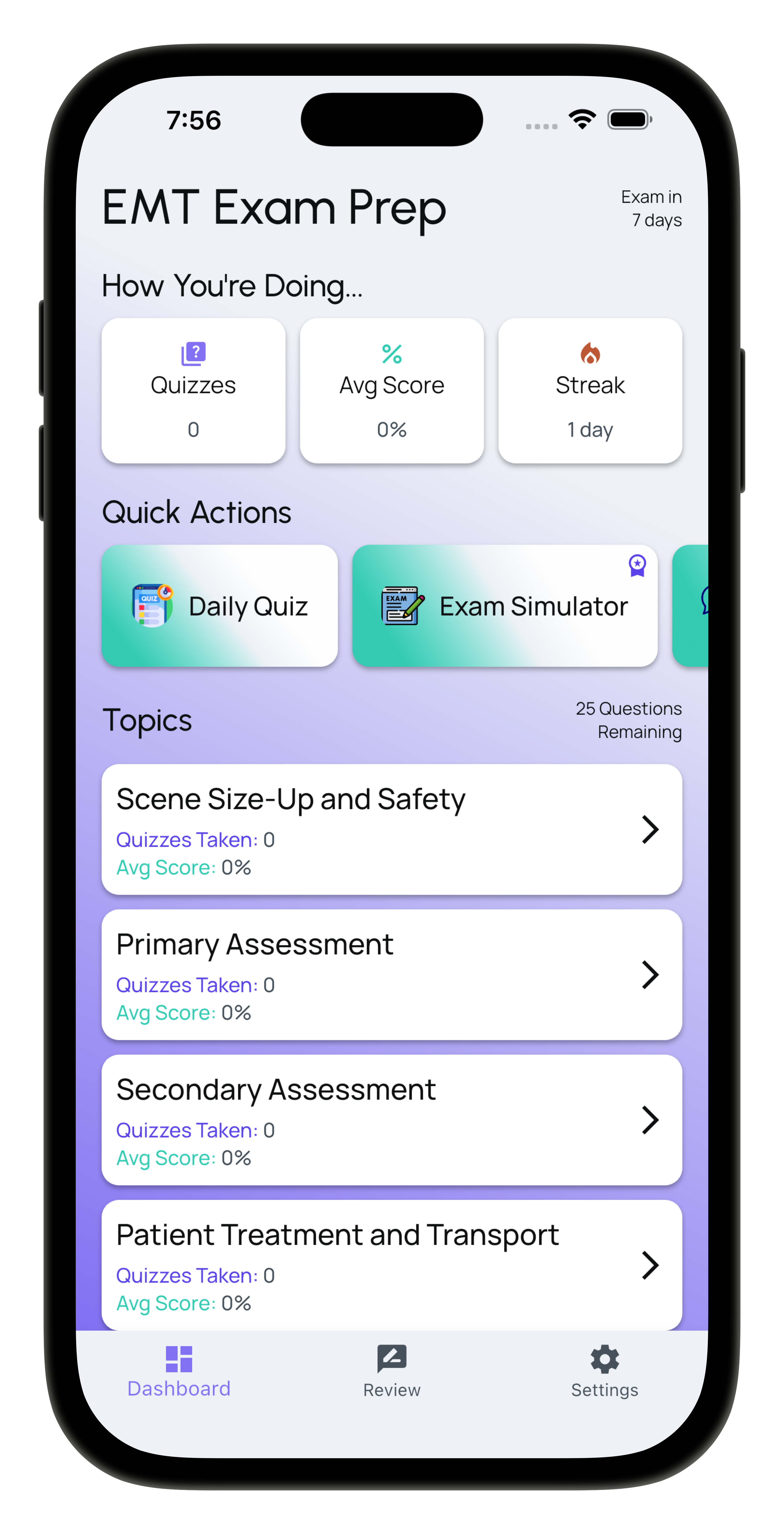EMT Exam Prep 2025
Time management is a crucial skill for Emergency Medical Technicians (EMTs) and candidates preparing for certification exams. Whether you’re navigating high-pressure situations on the field or tackling the NREMT exam, the ability to prioritize tasks, allocate time effectively, and remain calm under pressure can significantly impact patient outcomes and exam success. This blog post delves into actionable strategies for mastering time management in both scenarios, ensuring that you’re equipped to excel as an EMT.
Understanding the Importance of Time Management
In emergency medical services (EMS), time is often the difference between life and death. EMTs must assess situations quickly, provide appropriate care, and transport patients efficiently. Similarly, during your NREMT exam, managing your time well can help you answer questions accurately and avoid the stress of running out of time. By honing your time management skills, you will not only improve your performance but also enhance your confidence in both exams and real-life emergencies.
Time Management Strategies for the NREMT Exam
1. Familiarize Yourself with the Test Format
Understanding the structure of the NREMT exam is vital for effective time management. The exam consists of a series of computer-adaptive questions covering various subjects, including patient assessment, medical emergencies, and trauma care. Knowing the number of questions and the time limit helps you set a pace for answering questions.
Tip: Take practice exams with a timer to simulate the test environment. Familiarity with the timing will help ease anxiety on test day.
2. Prioritize Your Study Time
Effective study habits can significantly reduce the time needed to prepare for the NREMT. Instead of cramming, create a study schedule that allocates time to different subject areas based on your strengths and weaknesses. Focus more on challenging topics while maintaining a consistent review of what you already know.
Actionable Strategy: Use the EMT Exam Prep app to access NREMT-style practice questions and track your progress. Prioritize areas where you score lower to ensure a well-rounded preparation.
3. Practice Pacing Yourself
During the exam, you will have a limited amount of time per question. It’s essential to practice pacing yourself to avoid spending too long on any single question. Aim to answer each question in about one minute, allowing for extra time toward the end for review.
Tip: If you encounter a particularly challenging question, mark it and move on. Return to it only if time allows. This strategy ensures that you maximize the number of questions you answer.
4. Utilize the Process of Elimination
When faced with multiple-choice questions, using the process of elimination can save precious time. Quickly rule out any clearly wrong answers, increasing your chances of selecting the correct one even if you need to make an educated guess.
Time Management in Real Emergencies
1. Scene Size-Up
In an emergency situation, your first step is to conduct a rapid scene size-up. This involves assessing the environment, identifying potential hazards, and determining the number of patients. A thorough and quick assessment can streamline your response and allow for efficient patient care.
Takeaway: Develop a mental checklist for scene size-up to ensure no critical factor is overlooked. This will help you make informed decisions quickly.
2. Triage and Prioritization
In scenarios with multiple patients, triage is essential. Quickly categorize patients based on the severity of their conditions to ensure that those who require immediate attention receive it first. Familiarize yourself with the START (Simple Triage and Rapid Treatment) method or other triage protocols used in your region.
Practical Insight: Practice triaging mock scenarios during your training sessions to enhance your decision-making speed and accuracy.
3. Efficient Communication
Clear and concise communication with your team and medical personnel is crucial during emergencies. Use standardized communication protocols to convey critical information swiftly. This minimizes confusion and speeds up the delivery of care.
Tip: Engage in simulation exercises that emphasize communication skills. Practicing under pressure will help you develop the ability to convey essential information quickly and effectively.
4. Time-Saving Techniques in Patient Care
During patient assessment and treatment, certain techniques can save time without sacrificing care quality. For instance, using a systematic approach like the ABCDE (Airway, Breathing, Circulation, Disability, Exposure) method during assessments can streamline your process.
Actionable Strategy: Familiarize yourself with common procedures and protocols. The more you practice, the more efficient you will become in executing them in real-life situations.
Conclusion: The Path to EMT Certification Success
Mastering time management is essential for both passing the NREMT exam and providing effective emergency care. By implementing the strategies outlined above, you can enhance your ability to navigate the complexities of both the exam and real-life emergencies. Remember, effective time management not only improves your performance but also contributes to better patient outcomes.
As you prepare for your EMT certification, consider leveraging resources like the EMT Exam Prep app. With its comprehensive practice questions and detailed explanations, you can refine your knowledge and skills while honing your time management abilities. Stay focused, practice consistently, and approach both your studies and your future career with confidence. Your success as an EMT depends on it!
Ready to become a certified EMT? Try EMT Exam Prep 2025 for comprehensive NREMT-style practice questions with detailed explanations covering all essential certification content areas.
